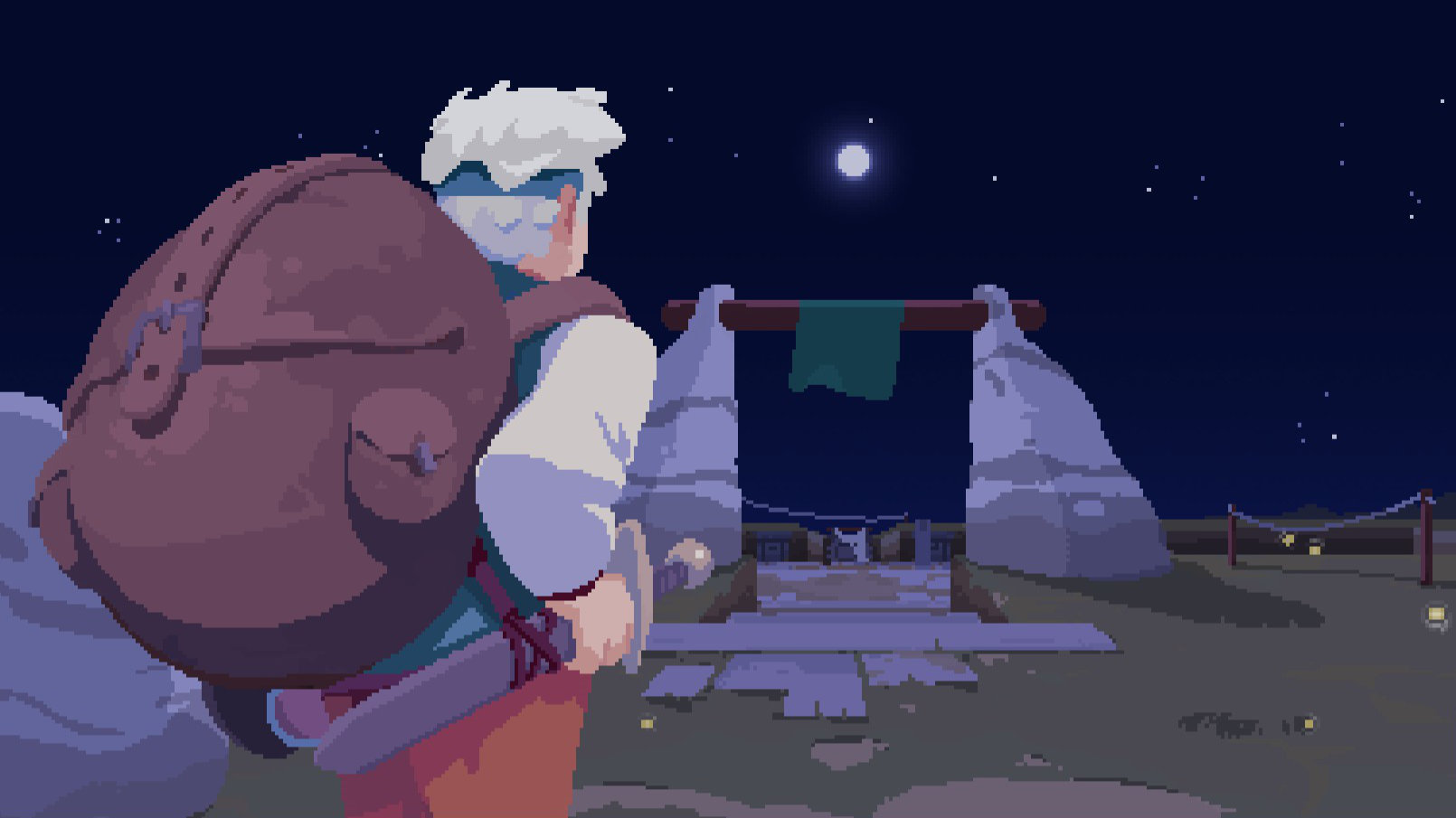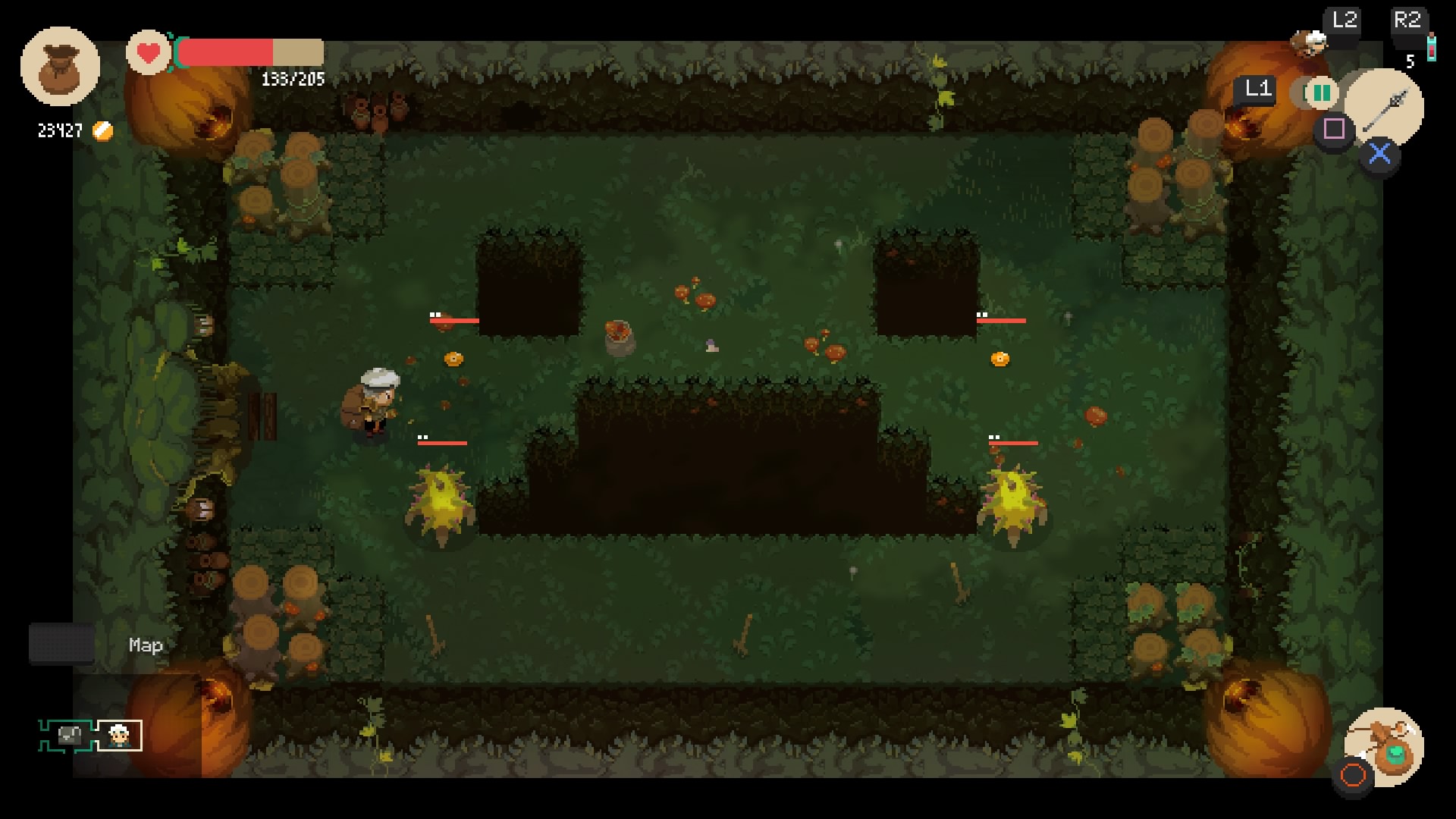Moonlighter Review - Roguelike Vendor
/Reviewed on: PS4 Standard
What I've Played
Finished the game and explored all dungeons available
Successfully prevented numerous thefts in Moonlighter
Fully upgraded the shop and unlocked all vendors
Around 20+ hours of play
Run a shop by day, explore dangerous dungeons at night; Moonlighter is an adventure that greatly resembles the classic Zelda games mixed in with the random elements and level generation you might see in roguelike games like Binding of Isaac.
Its appealing art design and concept drew me in. You play as the owner of a shop called ‘Moonlighter’ and are tasked with restoring this once-famed shop to the height of its glory days. Your town is located in Rynoka, at the intersection of four entrances to what the locals call “dungeons”. People disappear in these dungeons in hopes of finding valuable treasure. As an eager adventurer who also wants to secure treasure for himself, you delve into the four available dungeons after shop hours in hopes of coming back alive with items worth selling in your shop the next day.
Enemies need to be cleared before you can move forward.
A Routine Forms
Golem, Forest, Desert, Tech - each of these dungeons has unique items, level designs, sounds, and enemies that set each one apart. You’re moving up in the world of Moonlighter once you open a new dungeon, and then begins anew the process of looting all the new items, understanding their price ranges, and gathering needed crafting materials. Though every room and level is randomly generated, the random nature isn’t quite enough to make each unique run seem all too different. The predictable progression doesn’t ruin the fun, but since you’ll certainly embark on multiple dungeon runs before going for the boss waiting at the end, there simply isn’t enough inherent variety in the randomness to keep you on your toes at all times.
There’s a few weapon types to choose from, each with properties to differentiate them. Some were hard to pull off, especially the greatsword which has a slow build-up time, but I eventually settled in with the spear weapon, simply because the long reach kept me away from unwanted dangers. There are also gloves, and a bow to keep your distance. The sword and shield have the ability to block attacks.
Each of these weapon types have two upgrade paths; one for flat-out improved damage, and one that includes a status element, such as a chance to stun. The combat is simple, but will take some time to get used to, since some hitboxes tend to be off compared to the design and size of the enemies you are facing. Battles are constantly tense thanks to the decision to have you lose all of your loot when you die, resetting your progress completely as you begin again at a new dungeon entrance. While there are items that can allow you to return home with your loot intact or return you to where you left off in the dungeon, the fear of dying and losing everything never goes away. The beating heart sound when your life is dangerously low and stuck with a bunch of enemies still alive in a room is scary, and this happens a lot. When your bag is full of high-value items, it’s time to head home and dig into the other half of the game.
Always keep an eye out for those with sticky hands.
It’s Fun To Be A Shop Owner That Hunts For Their Wares
I didn’t think i would enjoy running a store that sells random items. You display your items and set a price. It’s more of a trial-and-error process, since you’re looking at the emotes popping up above an NPC’s head to see what they think about the price you’ve placed on the item. Naturally, a happy response means a great price, while the opposite would suggest an adjustment. Once you find that sweet spot for each of your wares, the money starts flowing. Currency can be used to craft new weapons and armor, plus upgrades to your shop, such as more selling space and decorations. You can also invest in the town by paying for the cost to set up a blacksmith or other vendors that will be useful to you in your adventures.
You are always sorting through your loot to make sure cursed items don't ruin your overall haul.
There’s a short window of time when the store’s open. There are different kinds of customers visiting your store, each with only specific items in mind. There are even those who try to steal items if you’re not paying attention. Once closing time hits, it’s back to the dungeon to find more valuable loot to sell. Rinse and repeat. I’ve went through 30 hours of looting and grinding with a big smile on my face. I liked repeating the process, but some might be turned off early with Moonlighter’s repetitive nature.
Moonlighter has an unusual mechanic regarding valuable items being cursed - that is, certain requirements need to be met in order for them to be placed in your inventory. Some items can only be played on the sides of your inventory grid, while others might destroy adjacent items. It’s an added layer of tedious micro-management that detached me from the dungeon crawling, since this all obviously needs to be sorted out before one can head home. I spent a lot of time in the menu screen adjusting and sorting. Do I bring this home, or convert it to gold right here? Is this unidentified item worth the item space? There’s a lot of decisions to make before you can return home to open shop.
Some might be bothered by Moonlighter’s grindy nature later on, but I found it to be a fantastic mix of dungeon crawling and a fun store management gameplay that made Moonlighter a treat to experience. Digital Sun crafted a perfect balance of the two main gameplay elements with a forgivable difficulty, and a cute and appealing art design that can appeal to a variety of players. Now if you’ll excuse me, Moonlighter needs a restock.
8/10
Highlights
Cute visuals and animations
Repetition is inevitable, and this might be a turn-off for some
Dungeon crawling elements are challenging and addicting
Novel mechanics make the shop-running work fun
Cursed items force players to spend more time in their inventory
[This review is based on a review code provided by 11 bit Studios and Evolve PR.]





